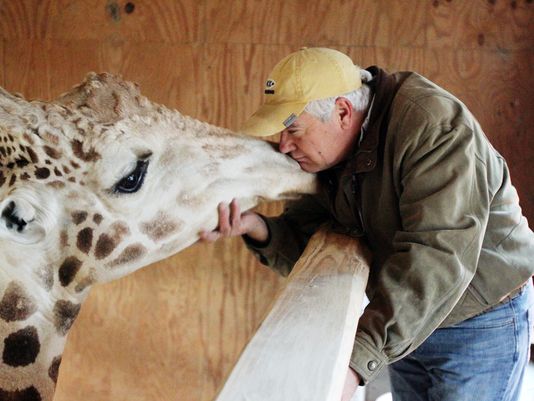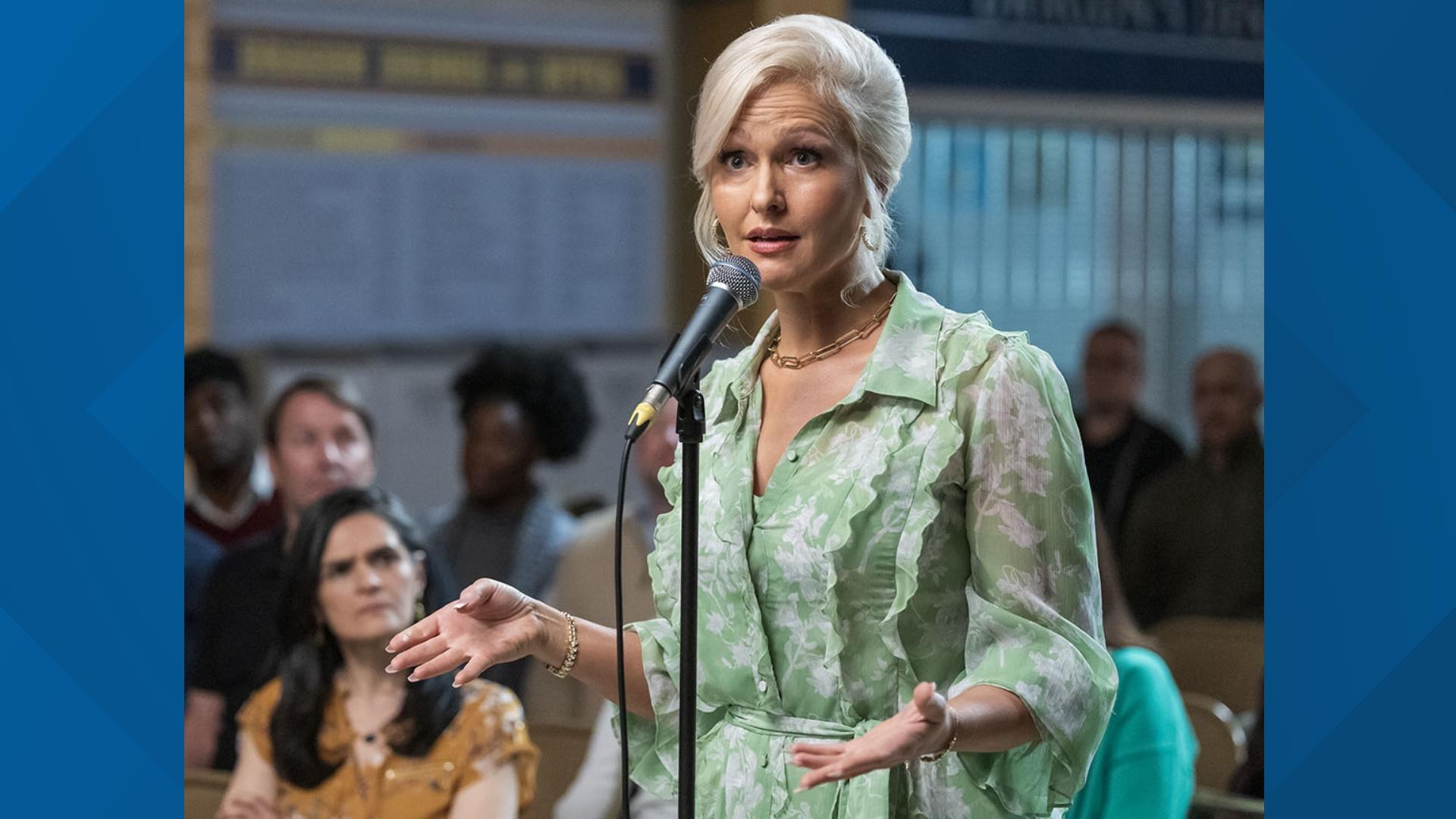LAFAYETTE, La. -- The early morning sky is an inky blue, but orange lights glow from small houses in many of the animal enclosures at Zoosiana, formerly the Zoo of Acadiana.
It’s just barely above 30 degrees, and George Oldenburg is making sure the heaters have kept his animals comfortable through the night.
As Oldenburg nears the enclosures, beady black tortoise eyes open, Capuchin monkeys bounce and swing in excitement and Gabriel, the 8-year-old giraffe, reaches his neck over the fence to nuzzle his owner good morning.
The afternoon before, the giraffes’ regular heater had broken, and Oldenburg had to stand a box fan behind a gas heater. He spent most of the night awake, walking to and from the giraffe barn to ensure his favorite of the zoo animals was keeping warm. Good thing, too. The propane tank needed changing halfway through the night.
It’s been 11 years since Oldenburg quit his 9-to-5 banking job to buy a zoo.
Oldenburg, 57, says he surprised himself when he purchased the zoo.
A year before the big purchase, his brother-in-law had died doing something he loved — flying planes.
“If I would have died working at the bank — if the bank would have been robbed, and I’d have been shot — yeah, I liked my job, but I didn’t love my job. I wouldn’t (have died) doing something I loved,” Oldenburg said. “How many chances in a guy’s life does one get to buy a frickin’ zoo?”
So after 21 years of working in the banking industry, Oldenburg resigned from Home Bank to put an offer in on the zoo.
John Bordelon, CEO and president of Home Bank, said he almost fell out of his chair when Oldenburg handed him a note with the words “I’m buying the zoo” scribbled on it during a meeting.
“It was quite the shock,” Bordelon said. “George was very well-liked by his customers. He took care of them every day. He was very much concerned about his customers being treated well, and he was very active in helping us move forward in lending.”
After resigning from the bank, Oldenburg sent out loan packages to three banks to secure financing. He learned that while there are a lot of documents on loans for restaurants, cars and oilfield companies, there are very few for zoos.
“It’s not so much coming up with a down payment,” Oldenburg said. “If the zoo didn’t do good for a couple of months, I had to show that I had a reserve of cash to cover those months.”
Oldenburg’s terms and conditions were accepted by one of the three banks, and he bought the zoo in May 2002. He prefers not to say how much he paid.
But he admits to making one big mistake at that time.
“I should have waited and purchased the zoo in the month of January or February because the income for the zoo is during the field trips to the zoo, which is March, April and May,” Oldenburg said. “I really only had one month, which made it a struggle for the rest of that year.”
And a rough first year it was for Oldenburg.
In addition to learning how to manage employees and care for exotic animals, Oldenburg had to cope with the damages that came from Hurricane Lili in October 2002 and the zoo’s biggest fundraiser Boo at the Zoo being canceled because of rainy weather.
“By December, I was like, ‘What did you do?’ ”
Spring 2003 things began improving for the new zoo owner.
His first field-trip season went well, and Oldenburg began brainstorming ways to generate income at the zoo, which opened in 1992 and attracts about 145,000 visitors each year.
He converted the building at the zoo’s entrance into a reception hall perfect for Christmas parties and weddings.
He started a summer day camp for kids.
“You always have to do something new because things get stale real fast,” Oldenburg said. “So I had to figure out how to acquire more animals. Who the heck do you call to acquire a zebra? Who do you call to acquire a giraffe?”
Figuring out how to properly staff the zoo took some time, too, according to Oldenburg.
“I wanted people who had an education. I wanted people who could read and write and understand what they were doing. I wanted people who could make a decision, people who had some sense about them,” Oldenburg said.
Today, every person on his 25-person staff either has a college degree or is pursuing a degree. Although the zoo does not have a veterinarian on site seven days a week, the six zookeepers each have a degree in zoology or biology.
“I learned very quickly you get what you pay for,” Oldenburg said. “If you’re going to pay somebody minimum wage, that’s what you’re going to get. It’s hard work to be a zookeeper, especially on days like today. That’s why I’m making them a little pot of gumbo.”
Lea Loftin, the zoo’s marketing and events director, watched the zoo change hands from its original owner to Oldenburg.
The previous owner worked at another business and didn’t have the interest required to run the zoo, Loftin said.
“The difference is unbelievable,” she said. “It went from somebody who owned a bunch of exotic animals to someone who cares about education and animals and the general public. It was a huge change for us. We weren’t used to it.”
Zoosiana is one of only a few dozen zoos that are privately owned in the United States.
The zoo is one of 52 accredited members of the Zoological Association of America, an organization for small, privately owned zoos. Through the organization, he can purchase, borrow or trade animals with other zoos.
“They provide a great service to the community,” Alan Sironan, board member for ZAA, said of Zoosiana. “And the Oldenburg family is very interested and very active in the organization.”
It costs about $1.5 million to run the zoo each year, according to Oldenburg. The zoo owns 800 animals representing 150 different species.
Compared to other Louisiana zoos, Zoosiana is small. For instance, The Audubon Zoo in New Orleans has 1,500 animals representing 360 species, and the Baton Rouge Zoo has 1,000 animals representing 800 species.
Oldenburg owns all of the animals at Zoosiana, but he has animals on loan elsewhere, such as a Sarus crane at Disney’s Animal Kingdom.
“I have to do stuff that other zoos don’t have to do,” Oldenburg said. “I can’t afford to buy flamingos at $5,000 a pop, but I can get eggs and I can incubate them and I can hand feed them.”
Although Oldenburg has found ways to make the zoo business worthwhile, he calls it a labor of love.
“It’s profitable,” Oldenburg said. “I’m not denying that, but it costs a lot to run. And I’ve chosen to put everything I make back into the zoo.”
He can use the profits to build a new barn and redo some fences. He can buy a new animal or give his employees a raise, he said.
Oldenburg’s oldest son, Matt, manages the zoo and plans to take ownership of it one day.
“He’s worked with me from the first day I bought it,” Oldenburg said. “My other two boys, nah, this is not for them.”
Oldenburg’s favorite part about owning a zoo is that the animals know and interact with him.
His favorite animal, by far, is Gabriel the giraffe. The Rothschild’s giraffe came to Oldenburg eight years ago on loan.
“He’s my pride and joy,” Oldenburg said. “He’s like my first zoo son.”
Then, Gabriel was just 6 months old and 8 feet tall. Oldenburg feared that the scared giraffe would topple over and hurt himself, so he decided to spend the night in the barn with the baby giraffe when he arrived.
“It ended up with him staying up and watching me all night instead of me watching him,” Oldenburg said. “And I think we kind of bonded. Actually, I stayed two nights in the barn, not just one, and he did perfectly fine.”
Oldenburg was able to buy Gabriel from his owner a few years later. Recently, the zoo bought a female giraffe, Evangeline, to serve as his mate.
The zoo staff is hoping to soon see baby giraffes.
“I establish these relationships with the animals,” Oldenburg said. “It’s not that I’m a Dr. Dolittle or anything, but still, I’m a good guy.”
Gabriel sure seems to agree, judging by the gentle nuzzles he offers to his owner as the morning sky welcomes the day’s start.
BY THE NUMBERS
More than $1 million — annual cost to run zoo
145,000 — people visit the zoo each year
1,900 — family memberships
800 — animals the zoo owns
150 — species the zoo owns
45 — acres the zoo owns
25 — people the zoo employs
$9.25 — cost of admission for adults
$5.50 — cost of admission for children
Source: Zoosiana


